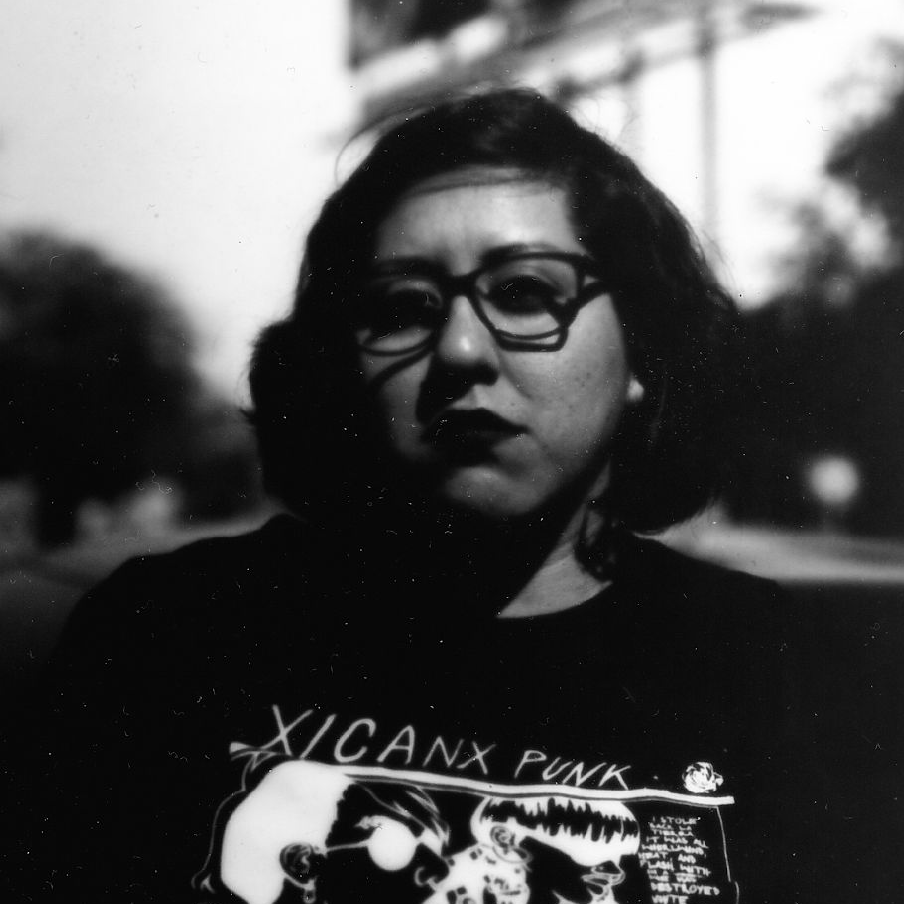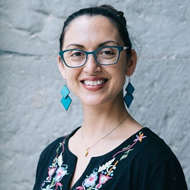Can anybody hear me? How white nonprofit writing standards erase BIPOC voices — and why that is definitely not OK
By Yolanda Contreras, professional zinester and fledgling fundraiser
I wanted to devote my time, education, and brainpower to an organization that could really make an impact. …
What I did not expect was the eradication of my voice in the process.
Writing has always been my saving grace. I grew up an introverted only child, and sometimes, I could only communicate through my writing.
My love of writing grew over the years, especially when I went full-force into zine creation in highschool. I loved the fact that I could create, print and distribute my own words, without dilution, to the masses. It became my form of therapy, to salve the scars left behind from very real pre-existing generational trauma to also new trauma.
Simply put, I write to heal.
Voices like mine are so important because BIPOC voices continue to be so rare in mainstream media and entertainment — and this matters because what mass media puts out trickles down into racial equity and nonprofit work.
So many times, we see the creation of BIPOC-serving organizations by all white people — organizations devoid of voices exemplifying the very communities that these white people are trying to help. This kind of white saviorism is commonplace because we live within white supremacy — it often exhibits as the erasure of diverse voices in favor of the white dominant voice.
Which is tragic, because oftentimes, our personal voice is one of the only things that we have.
I’ve orbited around nonprofits and volunteering for almost as long as I can remember, at least ever since I took on my first volunteer gig while in elementary school, assisting the school librarian. I’ve held various volunteer positions throughout the years, which have also included an internship at an esteemed nonprofit.
But it took me almost four years after college graduation for someone to actually hire me — to pay for my labor — and for me to finally jumpstart my official nonprofit career. Time after time, I found myself in front of an all-white hiring committee, defending and selling myself. Time after time, I would receive a rejection letter from a white leader figure who deemed me not good enough.
Maybe these nonprofits wanted to hire me — but didn’t — for reasons they couldn’t quite put their fingers on.
I think it’s the fact that I am a woman of color. And maybe I should have taken those instances as a warning of things to come.
I definitely had preconceived ideas of what a career in nonprofit would bring to my life. I thought, finally though, after years of trying, I found an organization that aligned with my values and passions.
I grew up a low-income, Salvi-Chicanx woman who was raised by a single mom. I knew all about struggle. At my core, I know I wanted to help those who were at risk of being the most marginalized. I wanted to devote my time, education, and brainpower to an organization that could really make an impact. I thought I had finally found it after years of trying so hard to break into an industry that was notorious for its exclusivity. I expected to feel fulfilled and to feel legitimacy in my efforts (as well as justify my student loan debt!).
What I did not expect was the eradication of my voice in the process.
In my new job, it became clear that the all-white editing team dictated how “our voice” should sound.
This seems to be all too normal in the nonprofit world — a diversity hire is thrown into the all-white snake pit and has to fend for themselves without knowing the rules of the game. I soon found out that I was in for the battle of my life, and my voice was in danger of being lost in the struggle.
As a fundraiser, I need to write a lot — e-blasts, newsletters, appeals, and grant applications. With this comes the inevitable editing process that many of us have experienced.
I am used to being edited, though. I welcome it. Throughout elementary school, college, and among my zine peers, I felt like I was always part of a process when someone edited or proofread my work. Proper editing improves writing and makes it more effective in my opinion. Editing should help you realize and refine your voice, not erase it.
I found out that this process was completely different within the context of a nonprofit. (Who decides what’s compelling and what tone we should be using in a nonprofit setting anyway?) In my new job, it became clear that the all-white editing team dictated how “our voice” should sound.
I thought I had consented to being edited with thoughtfulness and consideration — not having my work completely decimated and stripped of its essence by a vicious all-white editing team.
I also did not expect the complete silencing and utter erasure of my voice.
I’m not quite sure why I was so surprised, to be honest. We’ve seen whitewashing play out in almost everything we consume, whether it’s from reading history books in school, your favorite classic novel, or even watching a beloved mainstream film. It’s clear that being whitewashed isn’t just a specific “me” problem, but a problem affecting so many BIPOCs.
Maybe I expected that nonprofits would be above this, since we are, by design, created to uplift and help those who are marginalized. I learned hard and fast this is not the case all the time only three months into my new position, when I submitted an article for our quarterly newsletter.
Editing, in its scariest form, is gaslighting for already-weary BIPOCs. When BIPOC writers get a million edits that don’t make sense to us, we start to question ourselves, doubt our inherent worth and talent — then we start to mold ourselves to fit the white messaging of our organizations.
It was so altered beyond recognition that I didn’t even feel comfortable saying that I wrote it. Since my voice and words had been so heavily edited and erased, how could I possibly say I wrote it when that simply wasn’t true?
Worse yet, after all the tonal shifts, edits and re-edits, the whole thing was scrapped in favor of a similar article, written well after mine. Even though my article was pitched, written and submitted first, it was deemed “redundant” and then was subsequently replaced by yet another white voice.
This seems to be a running theme when white people are in charge of an organization. But to me, it’s especially surprising when it happens within a nonprofit that is designed to help people of color.
Diminishing BIPOCs’ unique voices is a legit manifestation of white supremacy. It is highly problematic and perpetuates exclusion among a huge group of people that can actually be utilized to do the most good — but they often don’t. Instead, nonprofits run by white people are very much of the mindset that they are the only ones that can help BIPOCs — as long we also know our place. We can never be the ones helping at their side. We have to be on the other side, watching and congratulating the good deeds that they do.
Gatekeeping messaging so that it conforms to bloated white communication norms is another form of white supremacy in action. This manifests as editing an article to death, tone-policing the words on a page, bogging down suggestions and ideas by having them pass through all-white committees who ultimately say no.
These subtle forms of white supremacy are death knells to the amplification of BIPOC voices and ideas. We can see this happening outside of the sector all the time, when companies and politicians talk about diversity without having a single BIPOC in the room, when the one woman of color only has a few sentences of dialogue in movies, or when the book about migrants coming into America from Mexico, written by a white woman, wins book of the year.
Editing, in its scariest form, is gaslighting for already-weary BIPOCs. When BIPOC writers get a million edits that don’t make sense to us, we start to question ourselves, doubt our inherent worth and talent — then we start to mold ourselves to fit the white messaging of our organizations — we start internalizing the white supremacy and racism that we try so hard to avoid.
When that editing incident happened, I had only been in the nonprofit game for a few months, and I could already feel my drive and spirit being crushed.
When a person of color hands you an idea, an article or a story, don’t edit it to sound like you. Do not whitewash our words to appeal to just one type of demographic. Make space for and amplify all of our voices.
Clearly, hiring people of color doesn’t solve diversity issues within nonprofits because so many important questions still linger:When a person of color is hired, what type of environment are they going to walk into? Will they be supported? Will they have a voice? Or will the all-white leadership deem them to be easily silenced and dismissed?
It took time, but today, I have come to realize that protecting myself and voicing my concerns loudly is the only way to go. I ended up aligning myself with the other BIPOCs in my organization and folded myself into a support group that was blissfully devoid of white voices. I started attending monthly meetings for BIPOCs who work at nonprofits. Lastly, I started recruiting other BIPOCs to join our editing team in order to ensure that “our voice” truly reflects reality. I can’t let myself drown this soon into my new career, even though it’s so easy to just allow that negativity to take hold and be submerged in it.
White people, I’m talking to you now:
We are not token hires to boost your diversity points. We want our voices heard. We deserve this at a minimum. The first step is to diversify voices within your editing groups and committees. Look at your working groups and see if there are only white folx at the table. If that’s all you have, then know that it equates to gatekeeping and the reinforcement of white supremacy.
Work towards dismantling that. Ask yourselves, how can you be for racial equity when you won’t even let us in the room!
Respect the labor of BIPOCs and honor that labor. When a person of color hands you an idea, an article or a story, don’t edit it to sound like you. Do not whitewash our words to appeal to just one type of demographic. Make space for and amplify all of our voices. Let go of your gatekeeping keys and let us in. Don’t erase my fellow BIPOC and don’t erase me.

Yolie Contreras
Yolie Contreras (she/her) is a Salvi-Chicanx writer, fundraiser and zinester. She is currently based in Tucson, Arizona, although she was born and raised in Southern California. She believes that words and actions matter, and as long as systems of oppression exist, it is our duty to dismantle them. When she’s not working, Yolie spends her time hanging with her husband and their cat, knitting, and perfecting her Animal Crossing island. She can be reached via email or on Instagram @Yolie4u.




